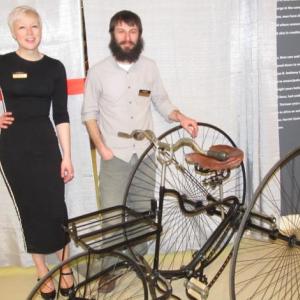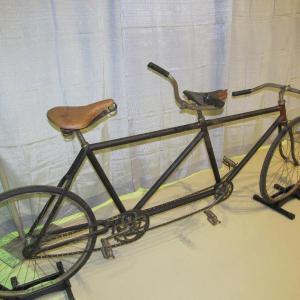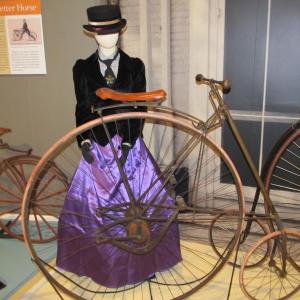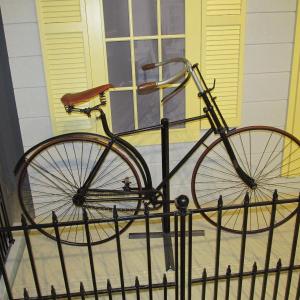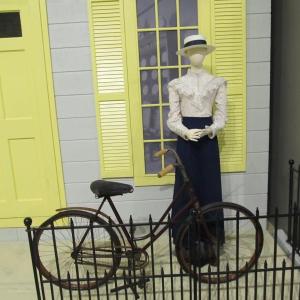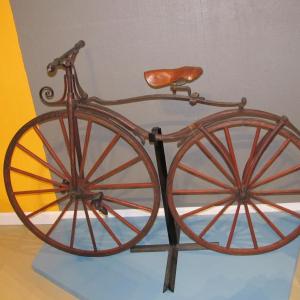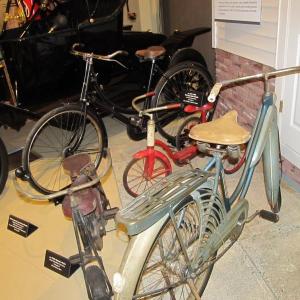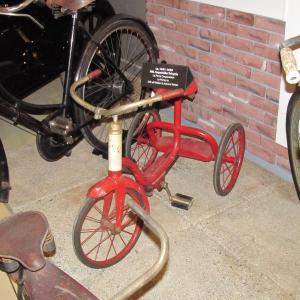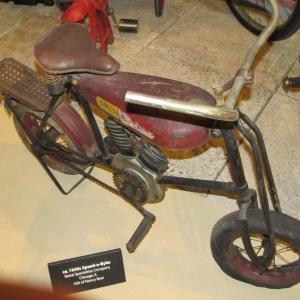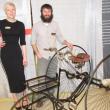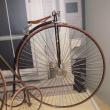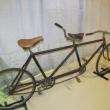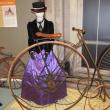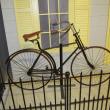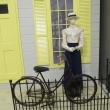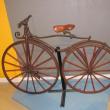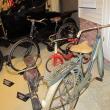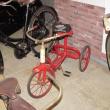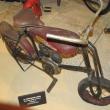Take the Owls Heads Transportation Museum's Bicycle Exhibit for a spin
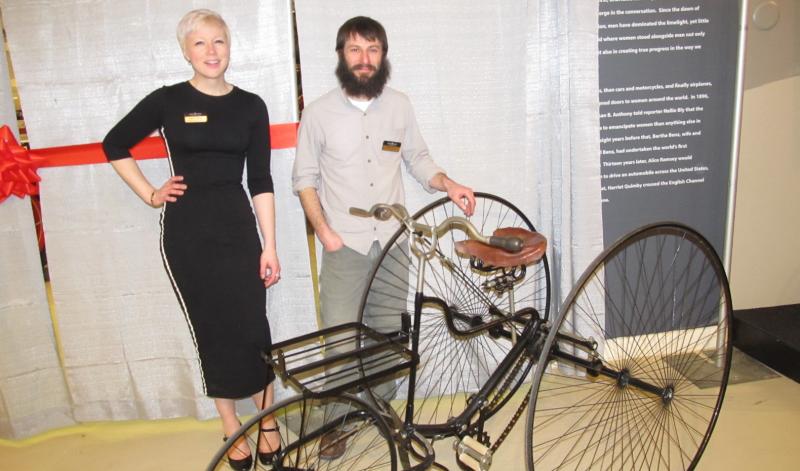 Sophie Gabrion, Communications Manager next to Rob Verbsky, the curator of this exhibit. Before them is 1885 Quadrant Tricycle. (Photo by Kay Stephens)
Sophie Gabrion, Communications Manager next to Rob Verbsky, the curator of this exhibit. Before them is 1885 Quadrant Tricycle. (Photo by Kay Stephens)
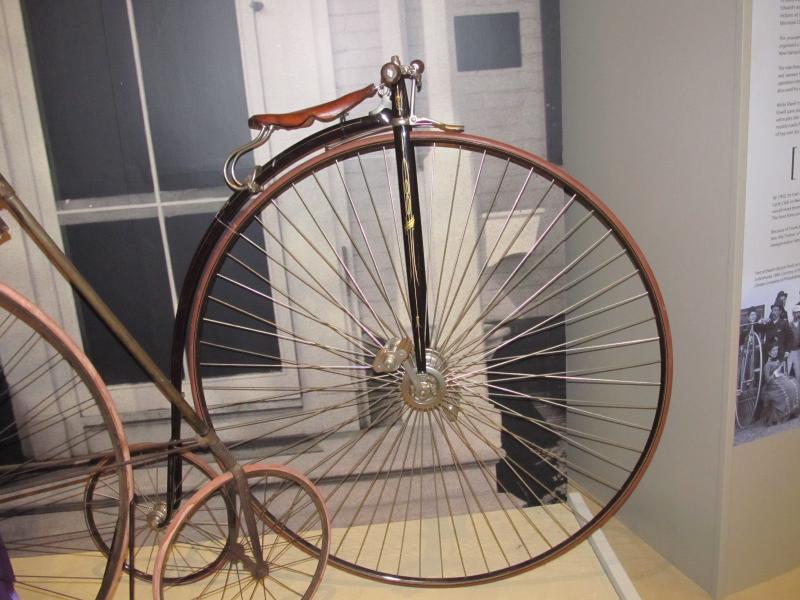 An 1880-1889 Bayliss, Thomas & Co. Excelsior. Photo by Kay Stephens
An 1880-1889 Bayliss, Thomas & Co. Excelsior. Photo by Kay Stephens
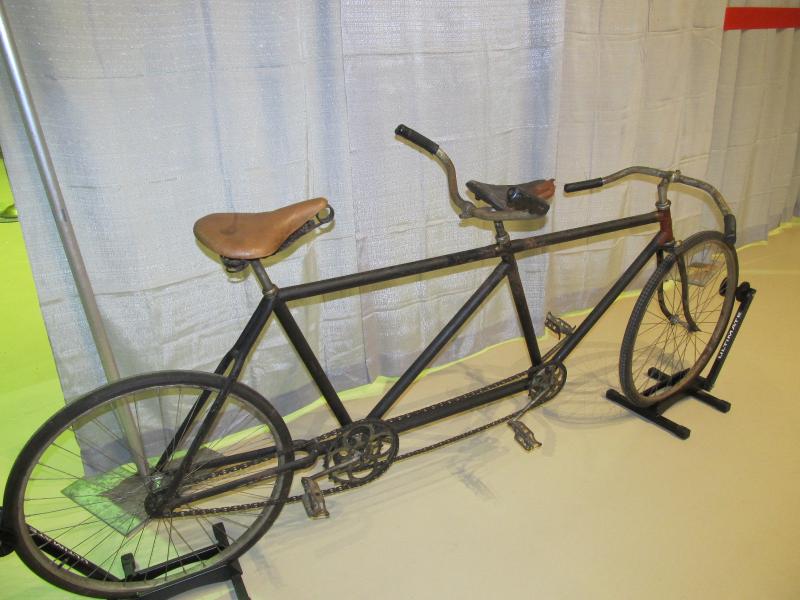 The tandem bicycle. Photo by Kay Stephens
The tandem bicycle. Photo by Kay Stephens
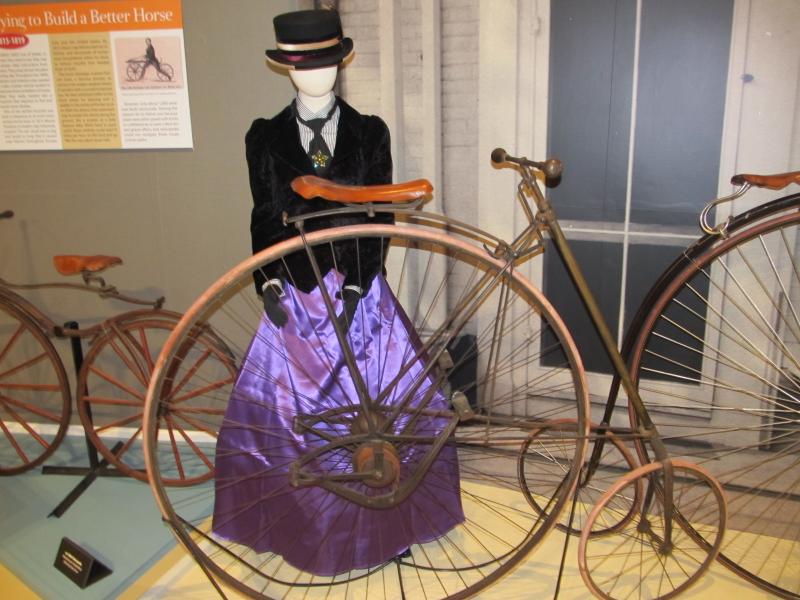 Women were not about to get on one of these high wheelers in full skirts. Photo by Kay Stephens
Women were not about to get on one of these high wheelers in full skirts. Photo by Kay Stephens
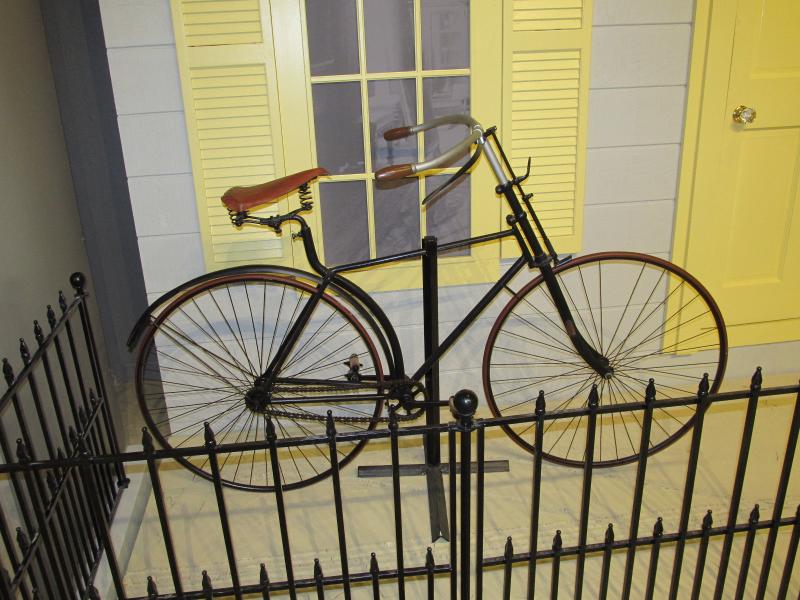 The difference between a men’s bicycle and a women’s bicycle was primarily the dropped frame. Here is an 1889 Perry, Richards, & Co. Empire Dwarf Safety Roadster. Photo by Kay Stephens
The difference between a men’s bicycle and a women’s bicycle was primarily the dropped frame. Here is an 1889 Perry, Richards, & Co. Empire Dwarf Safety Roadster. Photo by Kay Stephens
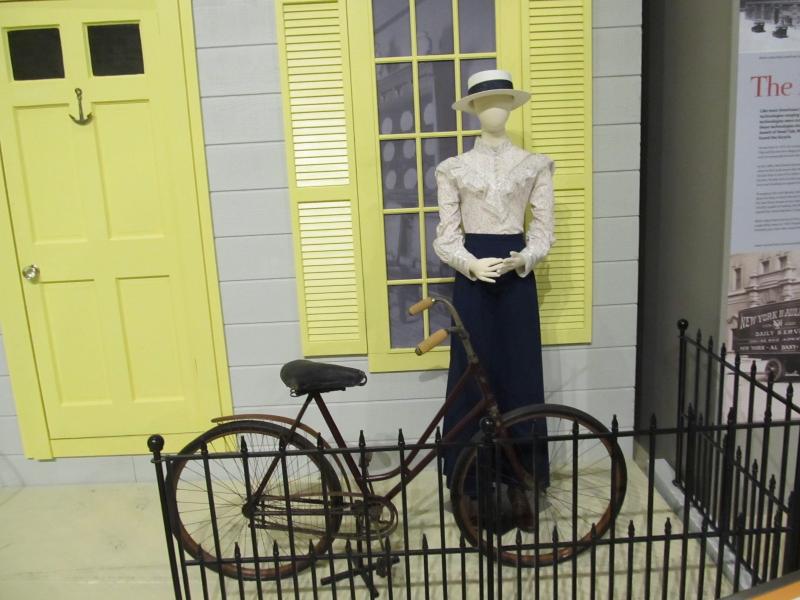 An 1896 Orient Ladies Safety bicycle. Photo by Kay Stephens
An 1896 Orient Ladies Safety bicycle. Photo by Kay Stephens
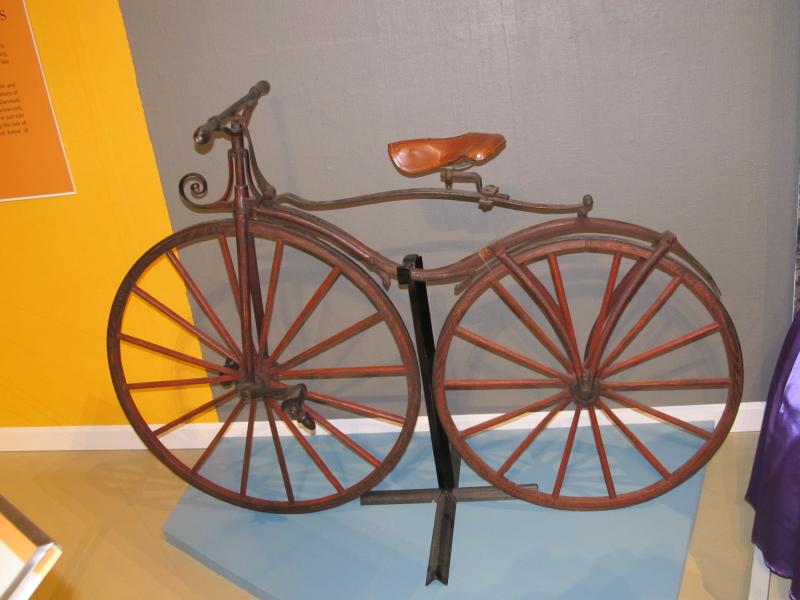 An 1868 Velocipede. Photo by Kay Stephens
An 1868 Velocipede. Photo by Kay Stephens
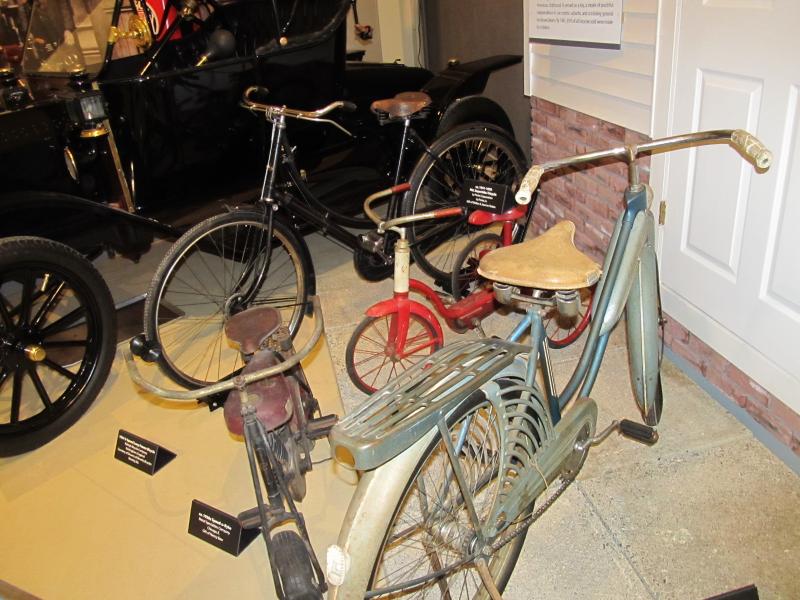 Children’s bicycles became popular around World War II. Photo by Kay Stephens
Children’s bicycles became popular around World War II. Photo by Kay Stephens
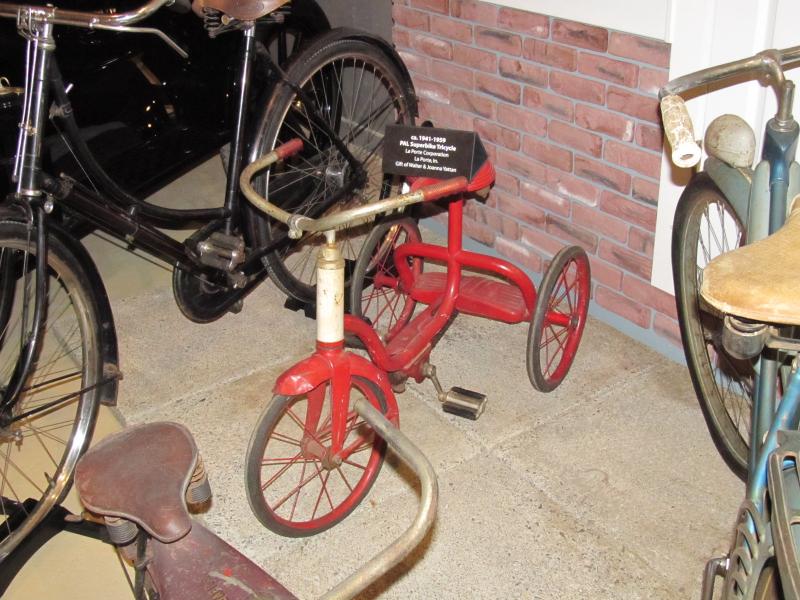 Photo by Kay Stephens
Photo by Kay Stephens
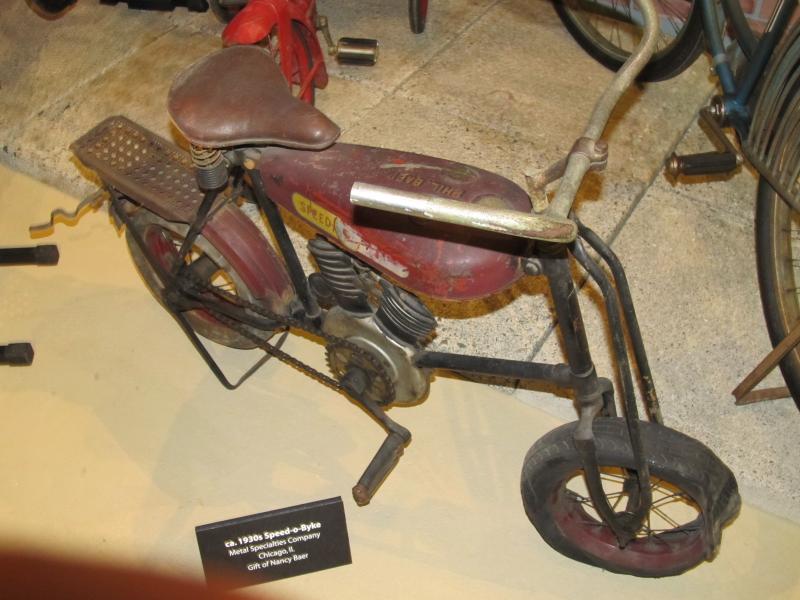 Photo by Kay Stephens
Photo by Kay Stephens
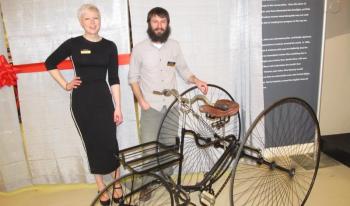 Sophie Gabrion, Communications Manager next to Rob Verbsky, the curator of this exhibit. Before them is 1885 Quadrant Tricycle. (Photo by Kay Stephens)
Sophie Gabrion, Communications Manager next to Rob Verbsky, the curator of this exhibit. Before them is 1885 Quadrant Tricycle. (Photo by Kay Stephens)
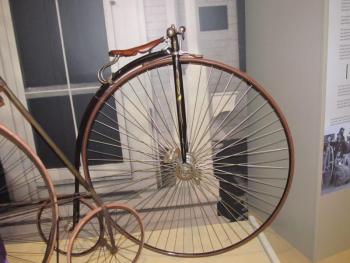 An 1880-1889 Bayliss, Thomas & Co. Excelsior. Photo by Kay Stephens
An 1880-1889 Bayliss, Thomas & Co. Excelsior. Photo by Kay Stephens
 The tandem bicycle. Photo by Kay Stephens
The tandem bicycle. Photo by Kay Stephens
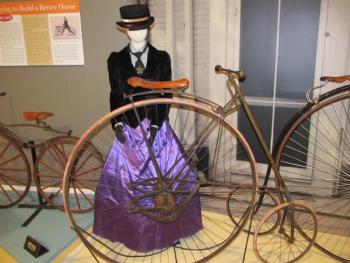 Women were not about to get on one of these high wheelers in full skirts. Photo by Kay Stephens
Women were not about to get on one of these high wheelers in full skirts. Photo by Kay Stephens
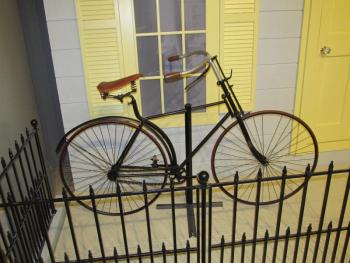 The difference between a men’s bicycle and a women’s bicycle was primarily the dropped frame. Here is an 1889 Perry, Richards, & Co. Empire Dwarf Safety Roadster. Photo by Kay Stephens
The difference between a men’s bicycle and a women’s bicycle was primarily the dropped frame. Here is an 1889 Perry, Richards, & Co. Empire Dwarf Safety Roadster. Photo by Kay Stephens
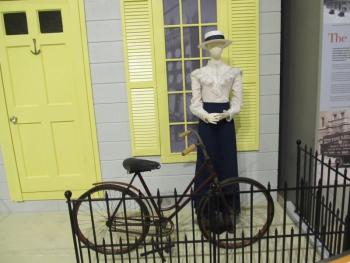 An 1896 Orient Ladies Safety bicycle. Photo by Kay Stephens
An 1896 Orient Ladies Safety bicycle. Photo by Kay Stephens
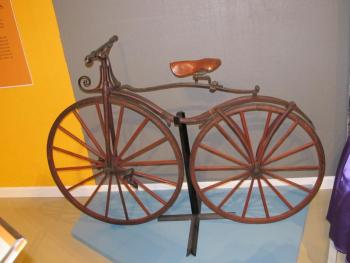 An 1868 Velocipede. Photo by Kay Stephens
An 1868 Velocipede. Photo by Kay Stephens
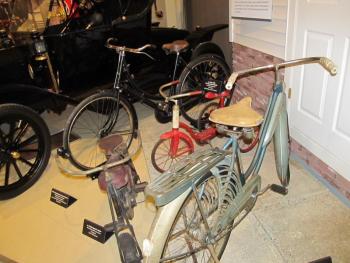 Children’s bicycles became popular around World War II. Photo by Kay Stephens
Children’s bicycles became popular around World War II. Photo by Kay Stephens
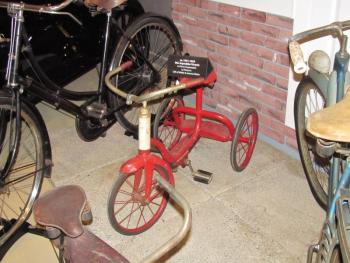 Photo by Kay Stephens
Photo by Kay Stephens
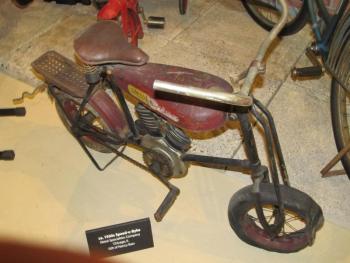 Photo by Kay Stephens
Photo by Kay Stephens
OWLS HEAD—In the modern world, all types of bicycles—fat bikes, 10-speeds, mountain bikes, ebikes —aren’t just for transportation, they’re also for sport and fun.
But back in the 1800s, they were the predecessor to the automobile, and in some Maine towns, the only way people who didn’t own a horse could get around.
Owls Head Transportation Museum Curator, Rob Verbsky said a recent donation helped spur the creation of their new Bicycles (1868 to 1935) exhibit.
“We received two vintage bicycles from a bike shop that was going out of business in Massachusetts,” he said. Not wanting the bicycles to be thrown out, the owners contacted OHTM to see if the museum could find a home from them.
“One of the bicycles was an1800s tandem bike that we still don’t know that much about yet,” he said, of the gift. “What we do know is that this was a bicycle made for communication. You had to literally pedal in sync at the same pace or you would crash. That’s how you know your relationship was working.”
With the Maine Bicentennial coming up, Verbsky began researching exhibit possibilities around transportation. Beyond the donated tandem bicycle to OHTM, he took a look at the stock of vintage bicycles that had been donated to the Museum over the years and found the connection he was looking for.
“I’m not from Maine, but when I came to [OHTM] two years ago, I started thinking about the year 2020 and researched the bicentennial of Maine to find out what was important to people back then,” he said. “Bicycles are pretty important to Maine’s history, as they were the first attempt in replacing the horse. Horses required a lot of care, but the bicycle was an opportunity for independence and to start learning the kind technical, mechanical skills that were going to be necessary for the emergence of the automobile.”
For the genders, the bicycle was more accessible to men wearing pants, which allowed more freedom of movement than to women and their many layers of petticoats and skirts.
Take the high wheeler, for example. Also known as The Penny Farthing, this style of bicycle had a very large front wheel and a small rear wheel. As ungainly as it looked and as precarious as it was to get on, it was meant to go very fast—nearly 17 miles an hour.
However, the unwieldy bicycle was built for the male physique and style of clothing.
“Women could not ride this bicycle: it was impossible,” said Verbsky. “The only way you could get on it is to get a rolling start. And women had these long skirts to contend with.”
By the late-1800s, bicycle designers began to consider the female physique into their designs. “It required the invention of the safety bicycle in the late-1800s for women to even have a chance to ride it,” said Verbsky. “Because social commentators at the time only allowed women to ride horses in a dress, the same protocol applied to bicycles.”
For women, bicycles were made smaller with a step-through frame —the sloped top tube.
“The dropped frame was so women could get onto a bicycle while still appearing ‘decent,” he said. “If you go to any store today, you see a women’s-style bike with the dropped frame and a men’s bike with the top tube going straight across. It is exactly the same design as it was from the late 1800s.”
The Velocipede Boneshaker was a cranked pedal bicycle invented around the same time as the high wheeler.
“This was one of the most dangerous ways to ride,” said Verbsky. “You could feel every bump and obstacle in the road. They finally figured out if you attached the pedals to a gear instead of to the wheel, you could get the same power transfer."
The World War II-era saw more changes for bicycle design.
“Bicycles in this era were beginning to gain a reputation for enjoyment and entertainment, particularly for children,” he said. “A lot of features were reminiscent of cars and prepared children for getting used to riding in automobiles.”
To see the various styles of bicycles and the history of each bicycle visit OHTM’s Bicycle Exhibit or visit the museum. The exhibit is currently on display with no end date listed.
For more information, visit: Owls Head Transportation Museum
Kay Stephens can be reached at news@penbaypilot.com
Event Date
Address
United States

